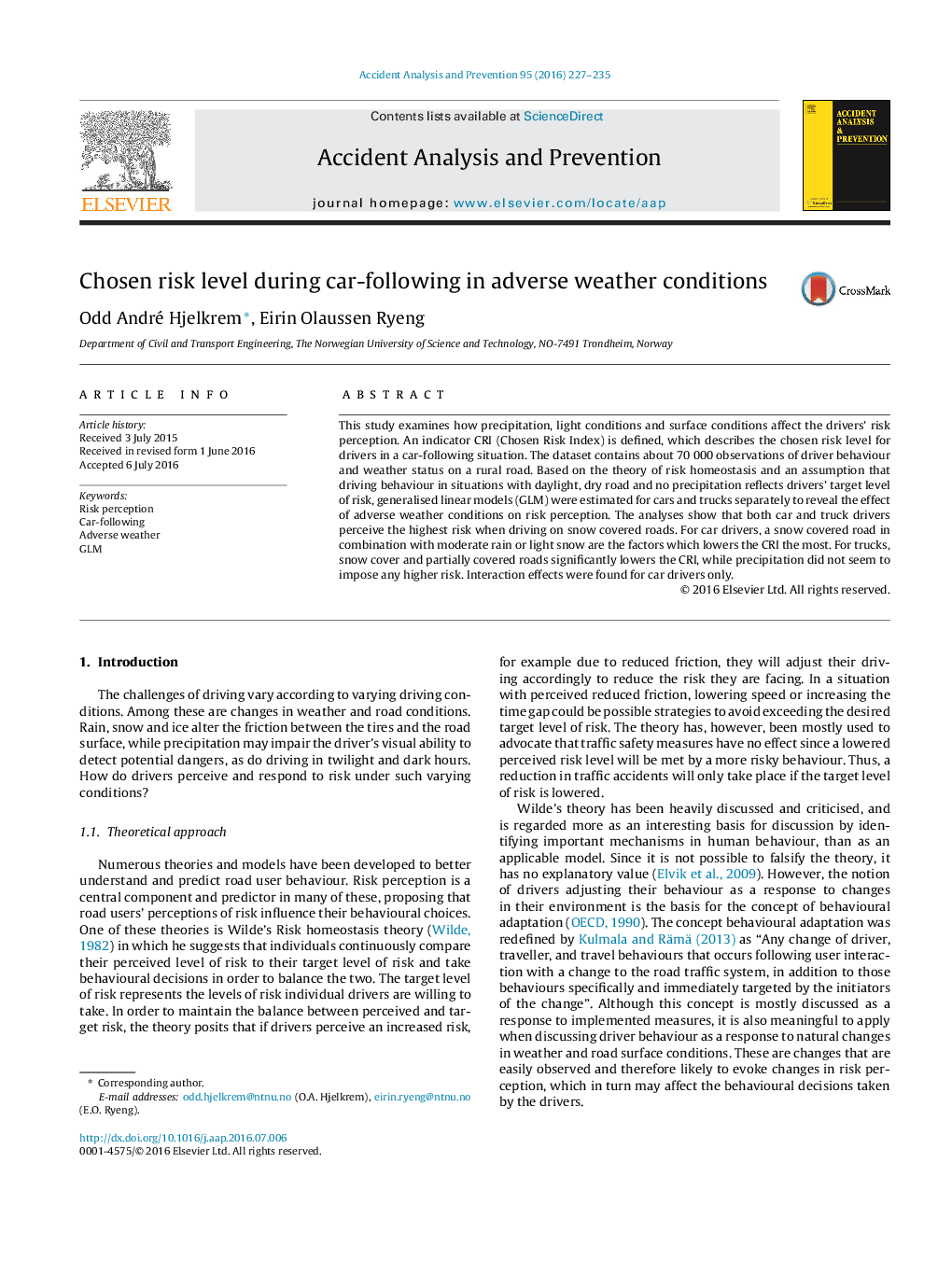| Article ID | Journal | Published Year | Pages | File Type |
|---|---|---|---|---|
| 571931 | Accident Analysis & Prevention | 2016 | 9 Pages |
•A study of car-following behaviour during adverse weather on a rural road.•An indicator of chosen risk level is defined.•GLM analysis based on approximately 70 000 observations.•Separate analyses were made for cars and trucks.•Drivers perceive highest risk from snow covered roads.
This study examines how precipitation, light conditions and surface conditions affect the drivers’ risk perception. An indicator CRI (Chosen Risk Index) is defined, which describes the chosen risk level for drivers in a car-following situation. The dataset contains about 70 000 observations of driver behaviour and weather status on a rural road. Based on the theory of risk homeostasis and an assumption that driving behaviour in situations with daylight, dry road and no precipitation reflects drivers’ target level of risk, generalised linear models (GLM) were estimated for cars and trucks separately to reveal the effect of adverse weather conditions on risk perception. The analyses show that both car and truck drivers perceive the highest risk when driving on snow covered roads. For car drivers, a snow covered road in combination with moderate rain or light snow are the factors which lowers the CRI the most. For trucks, snow cover and partially covered roads significantly lowers the CRI, while precipitation did not seem to impose any higher risk. Interaction effects were found for car drivers only.
